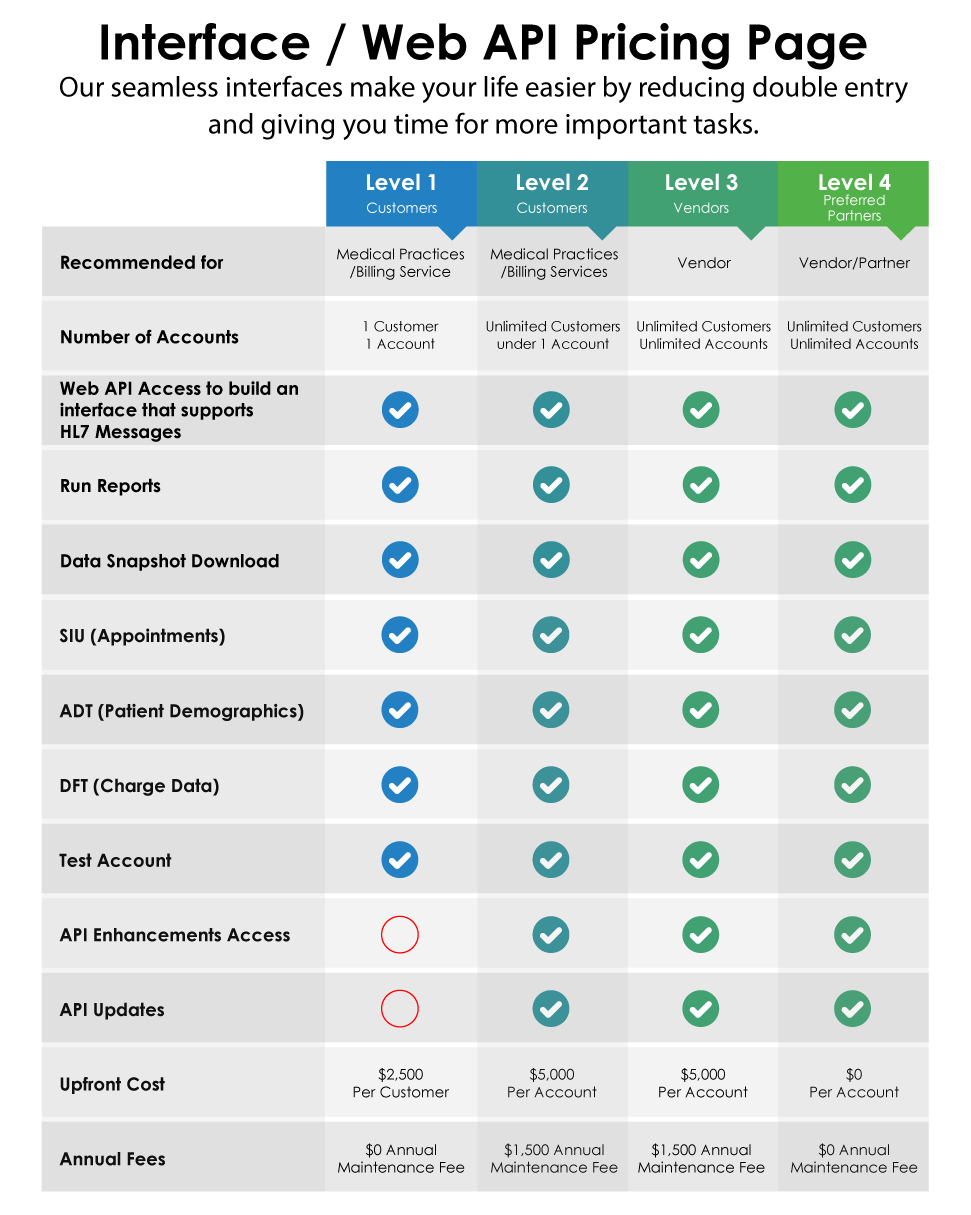CollaborateMD is a leading practice management solution and medical billing software that is dedicated to providing extraordinary service, superior billing software, and seamless integrations that improve customer's workflows.
CollaborateMD WebAPI services are another way we are increasing flexibility to meet all your data needs. CollaborateMD delivers and retrieves your data synchronized with third-party applications through our extensive array of interface solutions and cross-vendor communications. An interface bridges two systems together to avoid double data entry. The end result is an optimized workflow with clear communication between your front and back office.
CollaborateMD has dozens of existing Partners and Interfaces available today! Check them out before you proceed.
The Facts about the CollaborateMD WebAPI:
Documentation on the next page is for IT Professional(s) or Software Developer(s) and is not intended for non-technical users.
4 Levels of Integration
To enhance our interoperability capabilities for your organization, CollaborateMD offers a 4 Levels of Integration, each based on your integration needs and business type. Remember, if we don't already have an integration built, this allows your IT Professionals or Software Developer(s) to integrate certain data to streamline and reduce data entry. We offer integrations for:

This information is intended for the New Integration requests only. Documentation is for IT Professional(s) or Software Developer(s) and is not intended for
Does CMD Offer Interface Tracking? Yes. Interface Tracking allows a user with the "Interface Tracking" permission to track and monitor a patient, claim, and/or appointment messages received through an interface.
Through this user-friendly and complimentary feature, a user can:
What’s the difference between Uni-directional and Bi-Directional?
What does “Record of Authority” mean? Record of Authority indicates which system is the Master. The Master Record of Authority means that this is the first place the workflow begins. Such as entering a new patient. If CollaborateMD is the Record of Authority, the patient would always be entered into CollaborateMD first and then be sent to your integrated system. If the patient was entered into the integrated system it would not come back to CollaborateMD, if CollaborateMD is deemed as your Record of Authority (Master).
Who do you recommend be the Record of Authority?
This varies based on workflows, expectations, integration capabilities of your IT Professional or Software Engineer, and/or software supported features.
What are the options / limitations for Labs? We do not transcribe or decrypt “charge panel codes” – they must be able to support/send the ICD / CPT codes in the DFT Message (charge) in order to have a claim created.
Can we Sync our Payers? Payer synchronizing is very important to the health of an integrated system. We have worked with many partners and offer various options to support payer synchronization or payer lookups/matching algorithms. This would need to be discussed after reviewing the WebAPI Documentation with your IT Professional or Software Engineer and our Technical Team.
Can I upload a file to CMD to create Patients or Claims? CollaborateMD does not support the ability for users to import in files. The customer would need to have the WebAPI integration activated in order to have patients, appointments, and/or charge data synced.
How soon will I see a Return on my Investment? No matter which Level (1-4) chosen, an account, customer, partner or vendor can typically see a Return on Investment within the first 1-2 months of their Go Live Interface date, but it could take upwards of 4-5 months, depending on the amount of data integrated.
We highly recommend completing the above form and having your IT Professional/Software Engineer review the documentation. Upon review, you may proceed to the WebAPI Agreements page. Once this is reviewed and agreed upon, you only acknowledge the agreement when you are ready for CollaborateMD and your vendor to begin the interface work. No work will be completed, no test account received, no test credentials, etc. until the agreement is acknowledged and the Level Selected fees are paid in full.